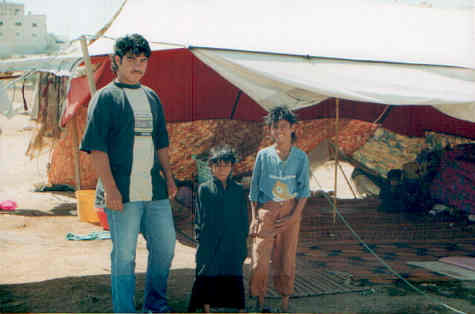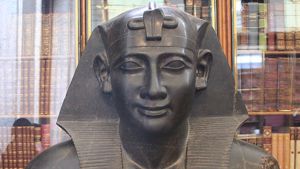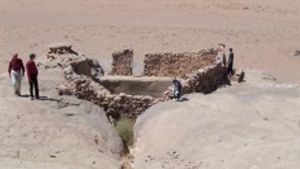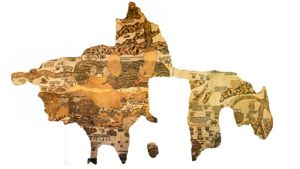At its peak, Nabataean influence stretched from modern day Yemen to Damascus, and from western Iraq into the Sinai Desert—at least according to some historians. We cannot be sure how large the area of Nabataean influence really was. While their caravans traveled widely, it is hard to be certain of the borders of their political control or the extent of their travel.
Written records of the Nabataean kingdom are sparse as there are only a few surviving documents and scattered inscriptions or graffiti. This also is strange: the thousands of instances of graffiti carved onto rocks and canyon walls clearly demonstrate that almost every Nabataean could read and write, even the shepherds. So, why not write their history? The Egyptians wrote on the walls of their temples; the Jews wrote on scrolls and the Babylonians wrote on clay tablets. Kings and rulers over the centuries wrote down their triumphs and exploits. The Nabataeans, however, seem to have refused to write. Their temple walls are bare. Their cities contain no libraries, and to date archeologists have found only a few scraps of writing. Why? What secrets did the Nabataeans have that they wished to withhold?
Even the ancient historians of Greece and Rome, who wished to write about the Nabataeans, mostly recorded Nabataean legends. The Nabataeans invented these amazing tales to hide their history, their trade routes, and the sources of their goods.
That’s not all. There are other puzzling questions. History tells us that the Nabataeans were nomads, dwelling in tents in the desert. Yet, within a few short years they built spectacular and awe-inspiring monuments. The magnificent city of Petra is so impressive that even today tourists stare in awe at the great ruins. Yet, this impressive city was hidden away in a cleft in the rock with access through a narrow crack in a mountain. The crack is over 1200 meters long and 3 to 6 meters wide, flanked by 100-meter-high canyon walls. Why hide a city? Why was it built in such a hurry, only a few short years before Christ walked on this earth? Thousands of monuments and tombs were erected in this hidden city, and then suddenly, the Nabataeans handed their empire over to the Romans and seemed to fade away.
Who were these Nabataeans who suddenly appeared in history? What was it that allowed these men from the desert to profit so richly from the frankincense and spice trade? Why did they build such tremendous monuments and then seem to disappear? These are only some of the questions that archeologists have been asking as they have dug through the sands of time. The answers they are finding are full of surprises. If you like history, you will truly enjoy the unique story of the Nabataeans..
A Starting Place
Nabataean history goes back thousands of years, but since it is so elusive, most historians start in 586 BC, when the Babylonians under Nebuchadnezzar’s leadership captured Jerusalem and the Jewish people were hauled off as captives to distant lands. During this time, Jerusalem lay deserted and destroyed. The emptying of Jewish lands provided an opportunity for the Edomites, the enemies of Judah. With no one to stop them, the Edomites began moving from the barren hills of the south into the rich abandoned lands of Judah to their north.
About this time, we begin to find records of Nabataeans living in Edomite territory. Did they immigrate into the area when the Edomites left, or had they been present for hundreds of years, living quietly along side of the Edomites? Most historians believe that the Nabataeans must have migrated into Edomite territory when the Edomites started their move north. However, I now believe that the Nabataeans were living in Edomite territory long before this, and it was only when the Edomites left that the Nabataeans gained enough prominence to obtain a distinct homeland they could call their own. I also believe the Nabataeans lived in other places in the Middle East at the same time, setting up their small tent communities on the outskirts of the ancient cities of Arabia.
Modern parallels to this can be found among the Turkomen and the Gypsies of the Middle East today. These groups live in most of the countries of the Middle East, yet they have no territory that they call their own. They set up their tents outside of major cities, yet they have no cities of their own.

Turkomen tent in Jordan
The Turkomen buy goods from their communities in one country and sell them in other countries–yet they have no trade agreements with any of the governments involved. They are almost invisible in today’s modern world because they move in the shadows of established civilization. Yet, they have their own culture, language, and history. Similarly, the Nabataeans keep appearing in very ancient historical records, but historians cannot pin them down to a particular location that can be called Nabataea. In their early history they quietly carried goods from one place to another, selling them at local markets, but never establishing diplomatic ties with the great historical empires. They lived on the margins of society, and people, as such, left them alone. All the while they grew richer and richer as they traded in more and more types of goods, until finally history could ignore them no longer.
Early Origins
Historians have uncovered several documents where the Nabataeans seem to be mentioned. But, unfortunately, no one is sure that the Nabataeans who built Petra are one and the same as the people mentioned in these documents.
Josephus, the ancient Jewish historian, identified the Nabataeans with Ishmael’s eldest son (Genesis 25:13). He claimed that the Nabataeans lived through the whole country extending from the Euphrates to the Red Sea. He refers to this area as Nabatene–the area that the Nabataeans roamed in. Josephus goes on to say that it was the Nabataeans who conferred their names on the Arabian nations (Jewish Antiquities I.22, 1). We can assume this to mean that during his lifetime the word Arab and Nabataean had become synonymous.
David Graf, in his book Rome and the Arabian Frontier: from the Nabataeans to the Saracens suggested that the Nabataeans were originally from Mesopotamia (ancient Iraq). Assyrian records tell of King Ashurbanipal (668-663 BC) fighting with the Nabataeans of Arabia. Are these the same people as the Nabataeans of Petra? In 703 BC, a group of Chaldaeans and neighboring tribes rebelled against Sennacherib, the Assyrian ruler. The ancient records of Tiglathpilezeer III list among the rebels the Hagaranu (perhaps the descendants of Hagar, the mother of Ishmael), the Nabatu (perhaps the Nabataeans, descendants of Nebayoth, the son of Ishmael), and the tribe of Qedar. The Qedarites are mentioned in Genesis 25:13 as descendants of a son of Ishmael named Qedar. These tribes fled into the desert during the conflict and could not be conquered.
A few historians believe that the Nabataeans descended from Nabaioth, a sister of Bashemath, one of Esau’s three wives. While the Edomites claimed decent from Bashemath, the Nabataeans simply referred to themselves as the Nabatu, meaning ‘people who draw water.’ The Assyrian kingdom eventually broke into two under two brothers, one the King of Babylonia and the other the King of Assyria. In 652 BC, conflict broke out between these two brothers, and in support of the Babylonian king, the Qedarites invaded western Assyria. As described in the records of Esarhaddan these Qedarites were defeated and fled to Natnu, the leader of the Nabayat, for safety. Later, the Qedarites and the Nabayat attacked the western borders of Assyria but were defeated. After their defeat, Natnu’s son Nuhuru was declared the leader of the Nabatu.
Arab literature from the much later Islamic period mentions that there were at least two distinct groups of Nabataeans in the Middle East at that time. First, there was a group of Nabataeans from Iraq that were known as Nabat al-‘Irak (Iraqi Nabataeans). Second, there were the Nabat al-Sham or Nabataeans of Damascus. As you will discover later, the Nabataeans controlled Damascus during the time of the Apostle Paul, and perhaps these Nabataeans were descendants of the Nabataeans from Damascus. The distinction between these two groups of Nabataeans is outlined very well in an article in the Encyclopedia of Islam Volume VII, under “Nabat.” The existence of several Nabataean groups helps explain how the Yezidis of Iraq and Turkey could claim connections with Nabataea, and why the Nabataeans are mentioned in Arabic literature as dwelling in Iraq. Were these really two separate groups? Historians still aren’t sure.
The Zenon papyri from 259 BC mention that the Nabatu were trading Gerrhean and Minaean frankincense, transporting it to Gaza and Syria. They transported their goods through the Qedarite centers of Northern Arabia, Jauf, and Tayma. Early Nabataean pottery has also been found in locations on the Persian Gulf, along the coasts of Saudi Arabia, and Bahrain: Tuwayr, Zubayda, Thaj, and Ayn Jawan.
There are also ancient references to the Nabatu living along the western edges of the Arabian Peninsula and in the Sinai. These Nabatu were pirates who sailed the Red Sea, plundering trading vessels. Later, they established bases in several seaports, including the port city of Aila (modern day Aqaba), which is only 120 km from present day Petra. While most of us think of the Nabataeans as people who transported goods in the desert by camel caravan, it has become increasingly evident that the Nabataeans were also a sea trading people.
Despite all of these historical records, it is still unclear where the Nabataeans came from. Language specialists tell us that Nabataean names were Arab names; their language was old Arabic, and that they seem to be found from the borders of Iraq to the deep Arabian desert. However, it appears that different groups of Nabatu wrote their names in slightly different ways, so that some archeologists today are reluctant to say that they are all the same tribe, or that any one group is the original Nabataeans. We will examine this issue in a later chapter that looks at the Nabataean language. We do know that in 586 BC, as the Edomites began a gradual migration north, the tribes of Arabia also began to move northward. From their port city of Aila (Aqaba) it was only a short move inland for the Nabatu to occupy the gradually emptying land of the Edomites, eventually making it the heart of the Nabataean Empire.
Although the chronology is not yet clear, it appears that some Edomites remained behind. Those that emigrated into Judea became known as “Idumaeans.” These were some of the people that opposed the Jews during the rebuilding of the temple at Jerusalem under Ezra, and later, the rebuilding of the city walls of Jerusalem under Nehemiah.
In the Edomite territory Nabataean culture quickly replaced the Edomite culture, and the Nabataeans became predominant. When did the Nabataeans actually arrive? This is hard to answer. It seems that the Nabatu had a practice of setting up their tents a few kilometers from major cities. For instance, they did this at Selah, just outside of the Edomite capital of Busheira. They did this at Meda’in Saleh, located 12 kilometers from Dedan (modern Al Ula), the ancient capital of the Thamuds and Lihynaites who lived in Saudi Arabia. They also did this at Jenysos, just a few kilometers south of the ancient port city of Gaza. Even after the Nabataeans replaced and absorbed the Edomites, ties between the Idumaeans and the Nabataeans continued, as is illustrated by the family of Herod the Great, whose father was an Idumaean and his mother a Nabataean.
Building an Empire
In the years after Alexander the Great, while the Roman Empire was taking shape, the Nabataeans managed to become one of the most successful commercial societies in the Middle East. They used their knowledge of sea routes and caravan routes so that they were able to form a solid link between eastern goods and western markets.
Amazingly, they managed to take their caravans through the desert, unaffected by the local tribes who controlled wells and grazing land. How did they do this and leave no record of their alliances and agreements with these tribes? Perhaps there never were alliances and agreements. I believe that the mysterious Nabataeans developed a method of transporting goods in the desert without needing to use the local water wells. Since the local tribes who controlled these water wells were sometimes hostile, the Nabataeans developed water collection systems that provided them with water in the desert. They developed these systems and hid them in places unknown to others. Using their widespread presence and their system of caravan routes and watering stops, the Nabataeans built an impressive trade empire in the heart of Arabia.
For centuries, the Nabataeans never constructed a single house, or a single temple. When they chose the site of Petra to build their magnificent city, it was a barren canyon, and possibly a place where they buried their dead. It seems that the Edomites never occupied this site. The Edomite capital was Busheira, located south of present day Tafila. Some Nabataeans had originally settled near the Edomite capital city, occupying a flat-toped mountain that was known as Selah. Since this was probably the location of previous massacres (II Kings 14:7), the Edomites would have avoided the place, leaving the Nabataeans to develop their settlement. The Nabataeans initially made a small tent settlement atop this mountain to serve as a refuge and a safe place to store their women, children, and goods when they were away buying and selling. Selah would play an important role in the years that followed.
When the Nabataeans did start building their city, they called it Rekem or Rekmu. This city would become so famous that its name would be recorded in the records of Chang Ch’ien, envoy to the Chinese Emperor Wu-ti (138-122 BC). This city also appears in the records of the civilizations of Greece, Egypt, Rome, and Byzantium–where the city was known by its Roman name, Petra.
Using the old Edomite territory as their hub, they set up a trading empire that surpassed anything seen before on the face of the earth. Through their system of merchants and trade, they began importing goods from the east and selling them in the west. In the next few centuries, they would import such goods as spices, animals, iron, oil, copper, sugar, medicines, ivory, perfumes, pearls, cotton, ginger, cinnamon, silk, frankincense, myrrh, and gold for the peoples of Egypt, Greece, and Rome. On the other hand, they exported to India and China henna, storax, frankincense, asbestos, cloth, silk gauze, silk damask, glass, orpiment, gold, and silver. They also were responsible for the transfer of ideas and inventions between the great eastern and western civilization.
What is more, it seems that the Nabataeans managed to gain a monopoly on most of these trade goods. As they pushed the prices higher, the Egyptians, Greeks, and Romans began to grumble. Some complained that their empires were being bankrupted. Others mobilized their armies to crush the Nabataeans. Every time this happened the Nabataeans managed to escape, usually without entering battle.
How were the Nabataeans so elusive? It is a question that has long puzzled me. The answer has been difficult to work out as the Nabataeans carefully hid all the evidence, fearing that the Greeks, Egyptians, and Romans would discover their secrets and crush their monopolies. As such, the Nabataeans have remained a mysterious civilization, with many of their obscurities and deceptions lasting until this present day.
Early Culture
Much of what is now known about Nabataean culture comes from the writings of early historians like Strabo, Josephus, Pliny, and Diodorus of Sicily. These historians give us tantalizing glimpses into Nabataean life and culture, as well as a broad outline of their history as seen by outsiders. Few Nabataean manuscripts survive to this day, outside of the Petra Scrolls, which are records of legal dealings during the Byzantine Empire, when the Nabataean Kingdom was already in decline.
Diodorus Siculus, who wrote Bibliotheca Historica, writes the following about the Nabataeans whom, like all historians of his day, he simply calls ‘Arabs’:
“Here it is worth while to recount the institutions of these Arabs, by the practice of which they seem to protect their liberty. Their country has neither rivers nor copious springs from which it is possible for a hostile army to get water. They have a law neither to sow corn nor to plant any fruit-bearing plant, nor to use wine, nor to build a house. This law they hold because they judge that those who possess these things will be easily compelled by powerful men to do what is ordered them because of their enjoyment of these things. Some of them keep camels, others sheep, pasturing them over the desert. Of the Arabian tribes there are not a few who graze the desert and these are much superior to the others in the amenities of life, being in number not much more than 10,000. For not a few of them are wont to bring down to the sea frankincense and myrrh and the most costly of spices, receiving them from those who convey them from what is called Arabia Felix. They are conspicuously lovers of freedom, and flee into the desert, using this as a stronghold. They fill cisterns and caves with rainwater, making them flush with the rest of the land, they leave signals there, which are known to themselves, but not understood by anyone else. They water their herds every third day so that they do not constantly need water in waterless regions if they have to flee.”
Diodorus’s account of the early Nabataeans describes them as nomadic desert dwellers. Much of his description also fit that of the Rechabites, a nomadic tribe who are mentioned in Jeremiah 35. The Rechabites were a nomadic people who fled to Judah in 586 BC when King Nebuchadnezzar began his conquest of the Middle East. It is interesting to notice that the Rechabites had the exact same prohibitions against agriculture, wine drinking, and living in houses as Diodorus ascribes to the Nabataeans.
Some have speculated that this must have been a typical nomadic mind-set that was common to most of the tribes in Arabia. There are even some parallels with the lifestyle of the Bedouin and Gypsies of the Middle East to this date.
Later, once the Nabataeans became a wealthy urban nation, they seem to have dropped these ascetic cultural aspects, while the Rechabites continued to maintain them. We learn this from early church fathers writing about events just before the Jewish Revolt (70 AD) who describe the presence of Rechabite priests in the Middle East.
It is interesting to note that a collection of 2000 papyri from 259 BC makes mention of the Nabataeans. These papyri were the archives of Zenon, the business agent for one Apollonius, the financial minister of Ptolemy II Philadelphos. Amongst the papyri was a document which describes the activities of two Nabataean men named Drimylus and Dionysius who made their living by selling slave-girl prostitutes. Their business extended between Joppa and Amman, and into southern Syria. There is no indication that it was unusual for Nabataeans to be doing business this far north, or of their particular business venture: prostitution. It is also interesting to notice that the papyri mention the purchase of Gerrhean and Minaean frankincense from a Malichus in Moab.
Another early text is a stele in the Damascus Museum which bears a Nabataean inscription that mentions a “king of the Nabataeans.” The stele is dated to the 3rd century BC making it the oldest known Nabataean text.
While archeologists still discuss and debate the origin of the Nabataeans, it is evident that they were firmly entrenched in eastern Palestine by 300 BC. Bible scholars know of this time as the 400 silent years, when there were no prophets in Israel. History, however, is not silent: during this time Greek armies swept the Middle East. A short time later, Alexander the Great’s generals divided their kingdom, with Antigonus The-One-Eyed briefly in power in Syria and Ptolemy in power in Egypt.
It is against this background that the Nabataeans step firmly into written history and begin to build their empire.




















Page Discussion
Membership is required to comment. Membership is free of charge and available to everyone over the age of 16. Just click SignUp, or make a comment below. You will need a user name and a password. The system will automatically send a code to your email address. It should arrive in a few minutes. Enter the code, and you are finished.
Members who post adverts or use inappropriate language or make disrespectful comments will have their membership removed and be barred from the site. By becoming a member you agree to our Terms of Use and our Privacy, Cookies & Ad Policies. Remember that we will never, under any circumstances, sell or give your email address or private information to anyone unless required by law. Please keep your comments on topic. Thanks!